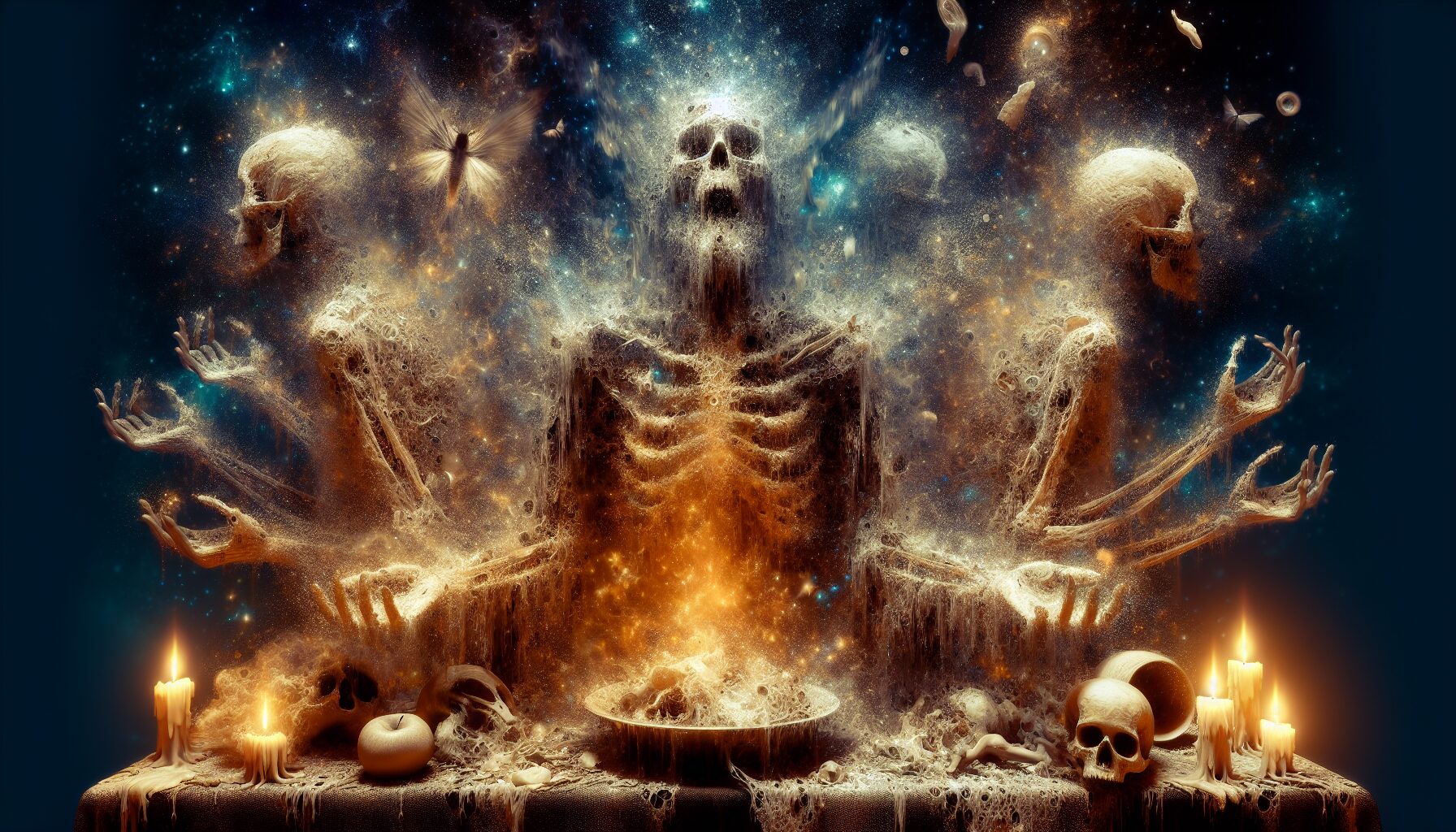Decay as Liberation: Dissolution of Form Into Spirit
In a world inherently subjected to change and deterioration, decay often carries negative connotations, a symbol of destruction and loss. However, when viewed through the lens of philosophical inquiry, decay can emerge as a potent metaphor for liberation. It signifies the dissolution of rigid forms, allowing for the emergence of the spirit, the essence, or truth that lies beneath the surface.
The Philosophical Context of Decay
Philosophy has long been occupied with the nature of change and transformation. Heraclitus, the pre-Socratic philosopher, famously stated, “No man ever steps in the same river twice.” His assertion captures the essence of constant flux, a recurrent theme in philosophy. Decay, in this context, is not merely a physical process but a necessary precondition for the transformation that fuels creativity and growth.
Nietzsche embraced decay as a pathway to authenticity and self-overcoming. In his view, traditional structures and values, once rigid and unquestioned, decay over time, making way for new modes of being. Nietzsche’s concept of the “Übermensch” or Overman, is born from the ashes of decayed morality, symbolizing liberation from societal constraints and personal rebirth.
Decay in Nature and Spiritual Awakening
In the natural world, decay plays an indispensable role. Decomposition transforms dead matter into fertile soil, nurturing new life. This cycle of decay and renewal is essential for ecological balance and diversity, and offers a profound metaphor for spiritual liberation.
The Taoist philosophy embraces this perspective, recognizing the harmony and interconnectedness of nature’s processes. Lao Tzu, in the Tao Te Ching, writes of the importance of humility and acceptance of life’s transient nature. By recognizing and accepting decay, we align ourselves with the Tao, the natural flow of the universe, thus achieving spiritual liberation.
“To the mind that is still, the whole universe surrenders.” – Lao Tzu
Decay as Liberation in Modern Thought
Contemporary philosophy and psychology continue to explore the concept of decay as a form of liberation. Existentialists, for example, argue that the awareness of one’s mortality confronts us with the necessity of authentic existence. Jean-Paul Sartre suggests that understanding and accepting the inevitability of decay and death can liberate individuals from superficial attachments, unveiling the true essence of being.
Similarly, in the modern spiritual framework, the process of self-examination often involves “decomposing” entrenched beliefs and identities. Spiritual teachers like Eckhart Tolle advocate for the dissolution of the ego to achieve enlightenment. Tolle posits that liberation arises when we let go of egoic identities and perceive the deeper, timeless essence of who we are.
“Realize deeply that the present moment is all you ever have. Make the Now the primary focus of your life.” – Eckhart Tolle
Art and Literature: Echoes of Weakening Structures
Art and literature, through various movements, have also captured the aesthetic of decay as a transformative force. Romantic poets, such as Percy Bysshe Shelley, celebrated the ruins as symbols of the sublime—a beauty found in the delicate balance between creation and destruction. Shelley’s poem “Ozymandias” reminds us of the inevitable decay of human power, suggesting a liberation from the hubris that often accompanies it.
In modern art, movements such as Surrealism and Dadaism have embraced decay as a reaction against established norms. These movements dissolved conventional forms and boundaries, paving the way for liberation and innovation in art and thought. As André Breton, the founder of Surrealism, asserted:
“The imaginary is what tends to become real.” – André Breton
Conclusion: Embracing the Liberation of Decay
Decay, far from being merely a negative process of loss, serves as a powerful emblem of liberation. It navigates us through the dissolution of forms to reveal underlying truths, spiritual awakening, and authentic existence. Both in nature and the realms of human thought, decay dismantles the old, clearing the path for renewal and transformation.
By reconciling with decay, we may embrace the freedom that lies beyond the dissolution—the freedom to rebuild, to redefine, and to rediscover the spirit within. As philosophers, artists, and spiritual seekers remind us, the liberation wrought by decay invites an inner revolution, propelling us toward deeper understanding and higher planes of existence.

Comments